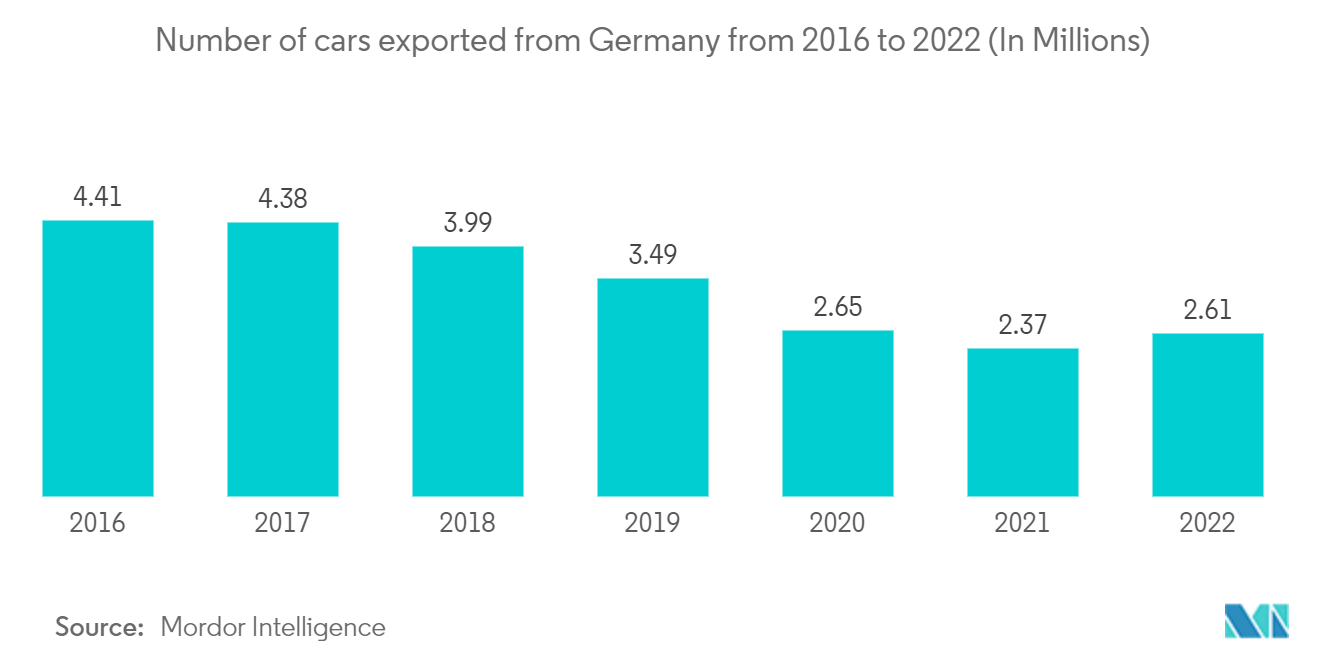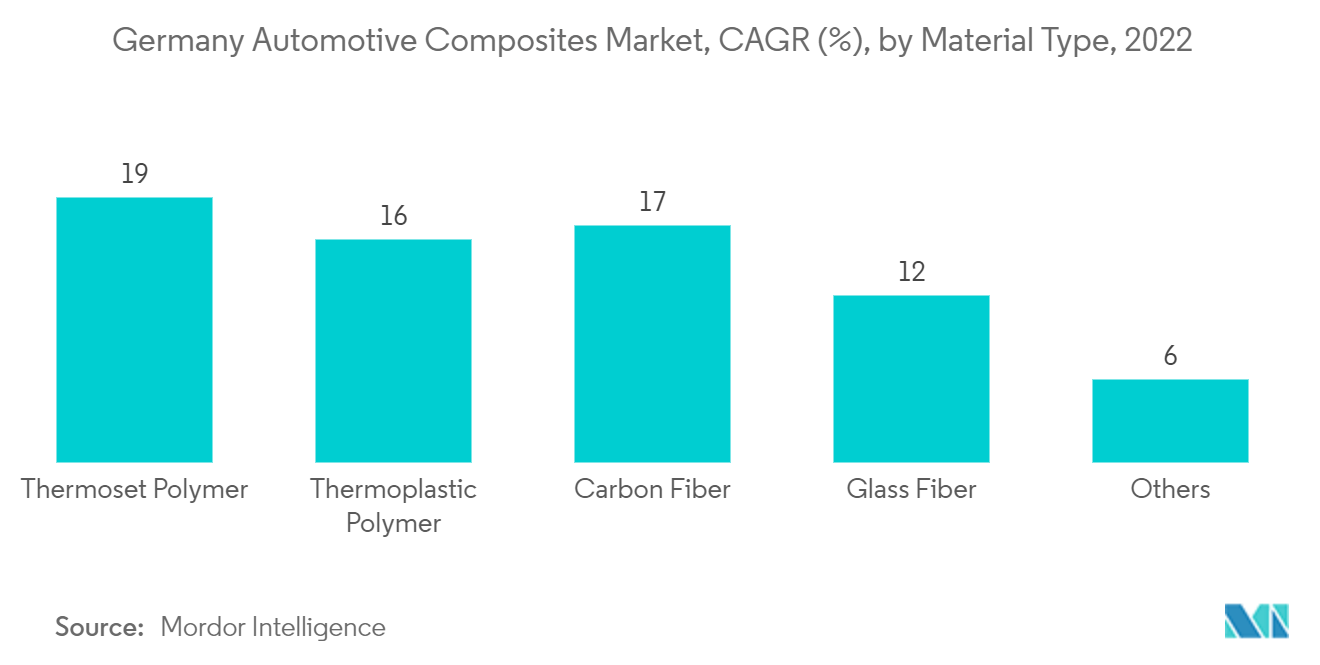Market Trends of Germany Automotive Composites Industry
Increasing Application of Lightweight Materials
- With sufficient technological advancements, German manufacturers are expected to see a rise in demand for car exports, which, the intern will increase demand for composite materials as manufacturers are looking to reduce car weight to keep up with emission norms across the world.
- With the introduction of electric automobiles in the market, the growth rate is expected to grow during the forecasted period. As Germany is racing towards reducing energy usage, the automotive composites market will have a positive impact. The automotive industry has been focusing on vehicle weight for decades, as vehicle weight has a direct effect on driving dynamics and fuel consumption.
- Due to the high cost of potential lightweight solutions and consumers' limited willingness to pay for weight reduction in automotive, the use of costly lightweight materials has so far been limited. As governments from around the world are implementing stringent emission regulations and even are planning to set even higher emissions standards in the coming years, the importance of lightweight materials will increase. In a typical automobile, the use of fibers is 50% by volume while adding just 10% to the weight. As per the US Department of Energy (DOE), reducing the weight of vehicles by 10% yields an increase of 6-8% in fuel economy. As a result, companies have started using materials like carbon fiber and glass fiber composites to make vehicles lightweight and fuel-efficient. The usage of glass fiber composites aids in reducing vehicles by 25%. EU emission regulations mandate a mere 95 g/Km of CO2 from 2021, with another 15% reduction by 2025 and 2030 a further 30% reduction by 2021.
- According to European directives and standards (2000/53/EC-End Life 0f Vehicles), the US Department of Transportation, the automotive manufacturing industry has to follow certain norms regarding environmentally friendly recycling and dismantling of vehicles, higher fuel efficiency standards, and increase in the use of recyclable materials which offers high potential for the composites market to grow during the forecasted period. A slowdown in global economic growth and structural change in the automotive industry are hurting this market, but during the forecasted period, the composites market is expected to grow.

Technological Advancements To Drive the Market
- Technological advancements play a crucial role in driving the German automotive composites market forward. These advancements have led to the development of innovative materials, manufacturing processes, and applications that offer improved performance, cost-effectiveness, and sustainability. Here are some key technological advancements contributing to the growth of the German automotive composites market:
- The development of new composite materials with enhanced properties has been a significant driving force. For instance, carbon fiber reinforced composites offer exceptional strength-to-weight ratio, stiffness, and corrosion resistance. These materials are being increasingly used in the automotive industry to reduce the weight of vehicles, improve fuel efficiency, and enhance overall performance.
- For instance, in March 2023, BMW announced that it would be using carbon fiber composites in the production of its new iX electric vehicle. This is a significant move, as it is the first time that BMW has used carbon fiber composites in a mass-produced vehicle.
- Hybrid composites, which combine different types of reinforcing fibers or combine fibers with other materials, have gained traction. By combining the benefits of different materials, hybrid composites offer improved mechanical properties and tailor-made solutions for specific applications. This technology allows manufacturers to optimize weight reduction, increase strength, and achieve cost savings.
- Advanced manufacturing processes such as automated fiber placement (AFP) and automated tape laying (ATL) have revolutionized the production of composite components. These processes enable precise fiber placement and reduce human error, resulting in higher production efficiency, improved part quality, and reduced manufacturing costs. The use of robotics and computer-controlled systems in composite manufacturing has significantly accelerated the production rate and expanded the application of composites in the automotive sector.
- Computer-aided design (CAD) and simulation tools have become increasingly sophisticated, enabling engineers to model and analyze composite structures accurately. These tools aid in optimizing component design, predicting performance, and simulating manufacturing processes. The ability to simulate and predict behavior allows for efficient product development and reduces the need for costly physical prototypes.
- The focus on sustainability has driven the development of eco-friendly composites and manufacturing processes. Recycled carbon fibers, bio-based resins, and natural fibers are being used to create composites with reduced environmental impact. Furthermore, advancements in recycling technologies have made it possible to recover and reuse composite materials, reducing waste and improving the overall sustainability of the automotive industry.
- Overall, these technological advancements are driving the adoption of automotive composites in Germany. They offer significant benefits such as weight reduction, improved performance, energy efficiency, and sustainability, making composites an attractive choice for automotive manufacturers striving to meet the evolving demands of the market.


